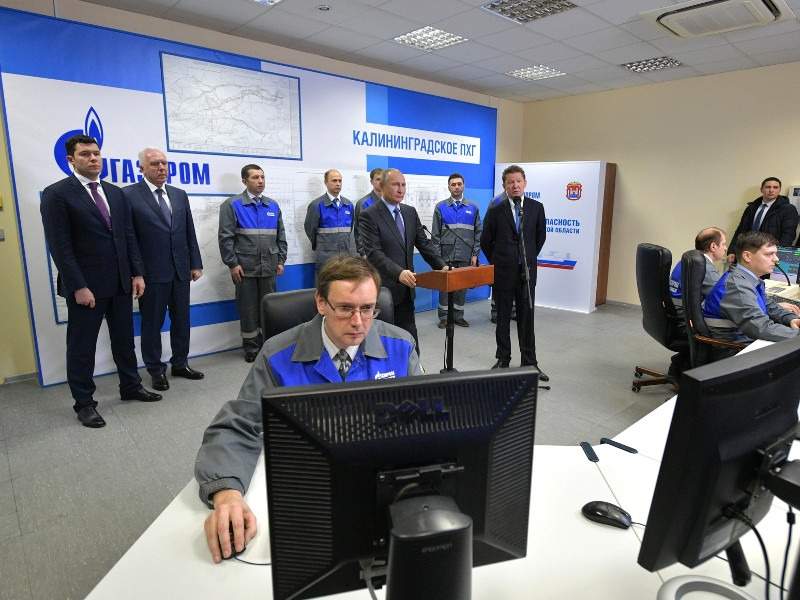Kaliningradskoye Underground Gas Storage (UGS) facility, located in Russia’s westernmost region of Kaliningrad, has been in operation since 2013. Owned and operated by state-owned company Gazprom, it is the first UGS facility in Russia.
The current storage capacity of the UGS facility is 174 million cubic meters (Mcm), which Gazprom plans to expand to 800Mcm by 2025.
The UGS facility receives gas through a 26km branch pipeline connected to the Minsk – Vilnius-Kaunas-Kaliningrad pipeline.
Gazprom connected the UGS facility with an offshore liquefied natural gas (LNG) receiving terminal and a floating storage and regasification unit (FSRU) called Marshal Vasilevskiy in January 2019, to further enhance the energy security of the remotely located Kaliningrad region.
Kaliningradskoye UGS facility details
Kaliningradskoye UGS facility created in salt caverns ensures gas supply to the Kaliningrad region even during extreme cold periods.
The construction of the Kaliningradskoye UGS facility began in 2009, while operations were started with two gas storage reservoirs in September 2013.
Two more gas storage reservoirs were added to the facility in December 2017, increasing the total storage capacity to 174Mcm.
The facility currently uses four GPA-4RMP gas compressor sets, while three additional compressor sets are planned to be installed at the facility in 2019.
The UGS facility is planned to have 14 gas storage reservoirs with a combined gas storage capacity of 800Mcm by 2025.
At its full capacity, the Kaliningradskoye UGS facility will be able to deliver 12Mcm of gas a day.
Marshal Vasilevskiy FSRU details
The Marshal Vasilevskiy FSRU is Russia’s first-ever and the only FSRU to be in operation till date. It is an Arc 4 ice-class vessel that can navigate in ice of up to 0.8m thickness.
It is moored for regasification operation at the Kaliningrad LNG import terminal, which is located approximately 5km away from the shore, in 19m-deep water.
The FSRU has three regasification lines, including one back-up line. The storage capacity of the FSRU is 174,000m³.
The gas from the FSRU is fed through a newly-built 13km gas pipeline connected to the existing gas transmission system, from where it is either further delivered to consumers or injected into the Kaliningradskoye UGS facility.
Kaliningrad LNG receiving terminal details
The Kaliningrad LNG receiving terminal features a fixed marine berth with a breakwater facility.
The marine berth comprises a 125.5m monolithic concrete slab mounted on 177 piles. The marine berth is protected by a 728m C-shaped breakwater, which consists of 29 rubble-filled metal cylinders.
Weighing more than 200t, each cylinder measures 20m in diameter and 21m in height.
Minsk-Vilnius-Kaunas-Kaliningrad pipeline details
Before the commissioning of the FSRU, the UGS facility used to source gas from the Minsk-Vilnius-Kaunas-Kaliningrad transit pipeline, which runs for 155km in the Kaliningrad region to supply gas to remote locations. The base diameter of the pipeline is 500mm.
Operating at a pressure of 5.4MPa, the Minsk-Vilnius-Kaunas-Kaliningrad pipeline has the capacity to transport 2.5 billion cubic meters (bcm) of gas a year.
Contractors involved in the UGS project
Sovcomflot, a maritime shipping company based in Russia, provides technical management services for the Marshal Vasilevskiy FSRU.
JSC, a subsidiary of United Engine Corporation Gas turbines (UEC-GT) supplied four gas compressor sets for the project. It was also awarded a contract to supply three more gas compressor sets for the Kaliningrad underground gas storage facility in 2019.





